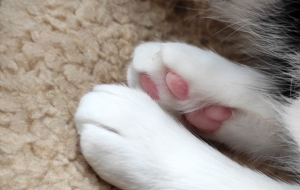Cat paw pads can change color for a variety of reasons. The color of a cat’s paw pads is determined by genetics, but other factors like temperature, injury, infection, and skin conditions can also cause cat paw pads change color. Understanding the causes behind different pad color changes can help cat owners identify any potential health issues.
An Overview of Cat Paw Pad Colors
Cat paw pads come in a few basic color variations:
- Pink: This is the most common pad color in cats. Pink pads contain very little melanin pigment.
- Black: Black pads contain more melanin. This is a dominant trait and is common in purebred cats like Bombay cats.
- Chocolate brown: This pad color results from a dilution of the black pigment. It is seen in breeds like Havana Browns.
- Spotted: Multi-colored spots on pads are common in breeds like Bengals. The spotting is determined by genetics.
- Purple: Some pads can appear reddish purple due to blood vessel proximity to the surface. This is normal.
While genetics determine the baseline pad color, other factors can lead to color changes in the paws over time. Here are some of the most common reasons cat paw pads may change color.
Can Cat Paw Pads Change Color?
Reason 1: Temperature-Related Color Changes
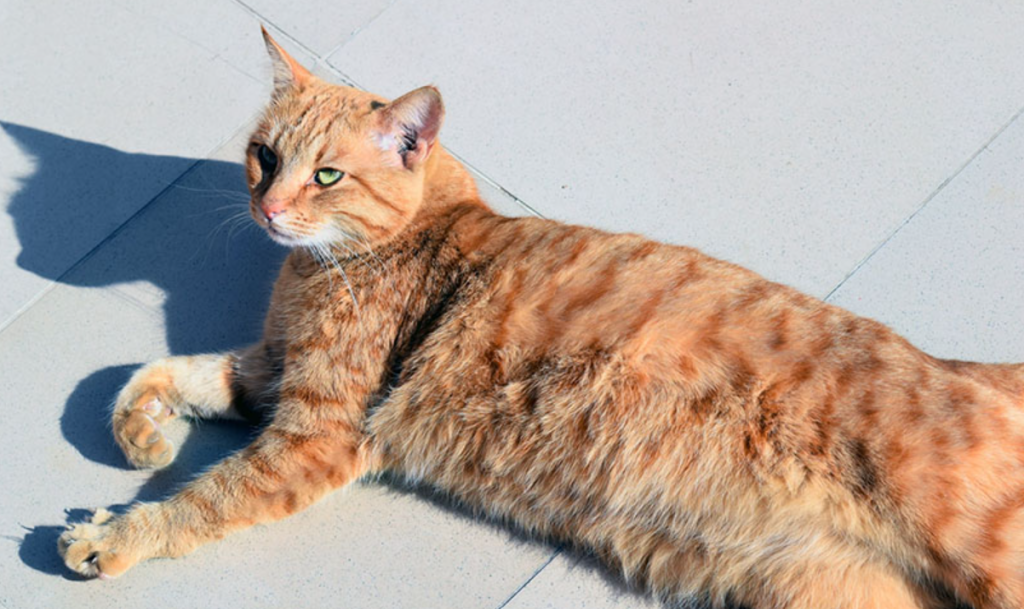
One of the most normal causes of temporary paw pad color change is temperature fluctuation. Here’s how it works:
Cold Temperatures Lead to Paler Pads
In cold weather, cats’ paw pads may lose their normal pink hue and appear much paler or almost white. This is due to vasoconstriction in the paws.
The blood vessels within the pads constrict (get narrower) in the cold. This reduces blood flow to the surface tissue, making the pads appear paler. The pallor protects the deeper tissues from freezing.
Once the cat returns to warmer temperatures, the blood vessels dilate again, restoring blood flow and the normal pinkish coloration.
Hot Temperatures Lead to Redder Pads
On the flip side, in hot conditions, cats’ paws may take on a much deeper, redder pink color. This is from vasodilation – the blood vessels expand allowing greater blood flow to the surface to release heat.
Tips for Temperature-Related Color Changes
Temperature-related pad color changes are normal and no cause for concern. To keep your cat’s paws happy:
- In cold weather, provide a warm, soft bed away from drafts so kitty can keep pads cozy. Booties can also protect their feet outdoors.
- In hot weather, ensure access to shady, cool resting spots. Keep hard surfaces like tile and pavement cooler. Paw balms can protect pads.
- For sensitive paws, choose litter that retains less cold/heat. An enclosed litter box offers privacy and insulation.
Reason 2: Injuries Leading to Color Change
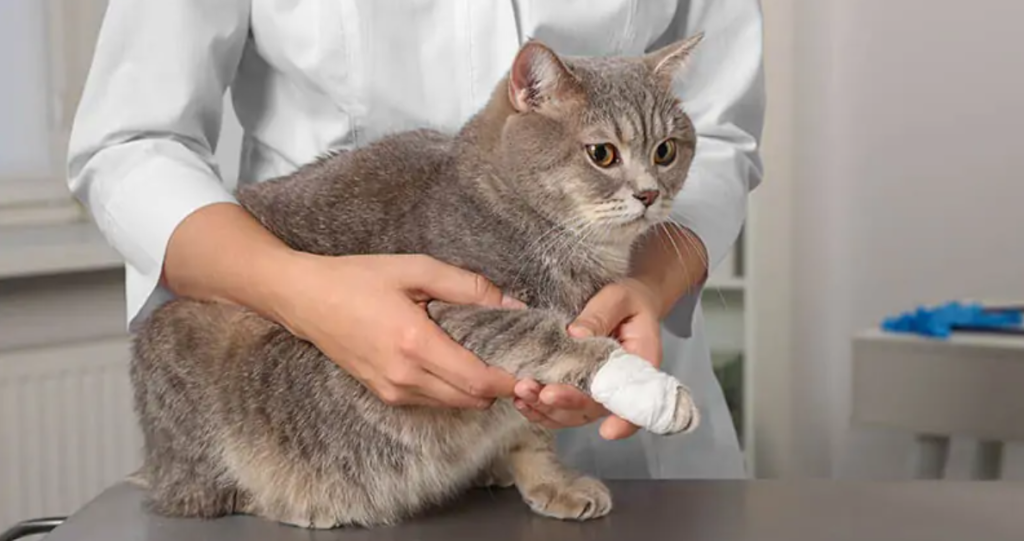
Injuries that damage the pad’s surface tissue can also lead to temporary or permanent color changes. Here are some examples:
Cuts, Tears, and Scrapes
If the pad’s surface is damaged, it exposes the deeper tissue beneath. This can result in redder pads or even some bleeding.
The exposed tissue may heal with scar tissue that lacks pigment, leaving pale patches. Deep cuts may heal darker than the surrounding tissue.
Burns
Chemical spills or contact with hot surfaces can burn the pads. Burned pads appear red, blistered and inflamed.
Healing may leave scar tissue that lacks pigment, resulting in pale areas. Fur may grow back white or black in burned areas.
Frostbite
In severe cold, pads can actually freeze. Frostbitten pads look pale, swollen and feel stiff. Thawing causes burning, redness and pain.
Frostbite can damage tissue, causing persistent color changes. Healing may leave white, waxy scars or black, thickened pads.
Treatment for PAD Injuries
To treat pad injuries:
- Gently clean cuts with soap and water. Apply antibiotic ointment and bandage if needed.
- Treat burns by immediately cooling the paw in cool (not cold) water. See the vet for treatment.
- For frostbitten paws, gently warm with lukewarm water. Seek emergency vet care for potential tissue damage.
- Allow injuries to fully heal before exposing paws to harsh surfaces again.
- See the vet promptly for any deep cuts, burns or frostbite injuries needing additional care.
Reason 3: Infections Causing Paw Color Changes
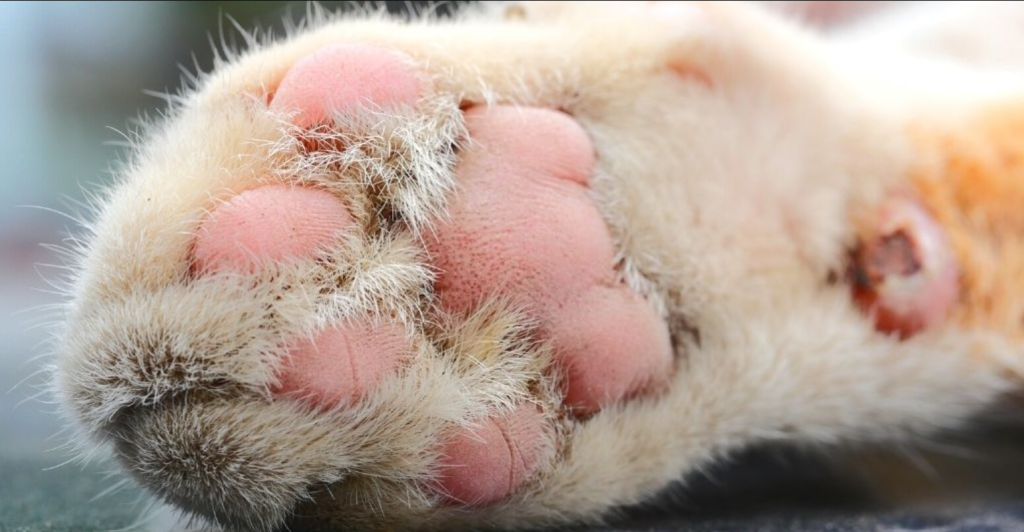
Infections that affect the skin or tissue of the paw pads can also cause temporary color changes:
Bacterial Infections
Bacteria like Staphylococcus can infect pad injuries or enter through cracks in the skin. This causes redness, swelling, oozing, and an unpleasant odor.
As the infection resolves with treatment, the tissue may heal with pale scar tissue or darkened areas.
Yeast Infections
An overgrowth of yeast like Malassezia can infect the moist folds between the paw pads. This causes redness, irritation, and a greasy brownish discharge.
With treatment, the infection will clear and the paw pads should return to normal coloration.
Feline Calicivirus
This common upper respiratory virus can also cause paw pad swelling, ulcers, and oozing. The pads appear inflamed and irritated.
Once the virus runs its course, the pads generally heal normally. But some discoloration is possible from scar tissue.
Treatment for Pad Infections
To treat suspected pad infections:
- See the vet for diagnosis and treatment recommendations.
- Topical and oral antibiotics will be prescribed for bacterial infections.
- Anti-fungal medication will be prescribed for yeast infections.
- Supportive care helps relieve symptoms of calicivirus until it resolves.
- Keep areas clean while healing. Monitor for reinfection.
Reason 4: Allergies Causing Paw Color and Texture Changes
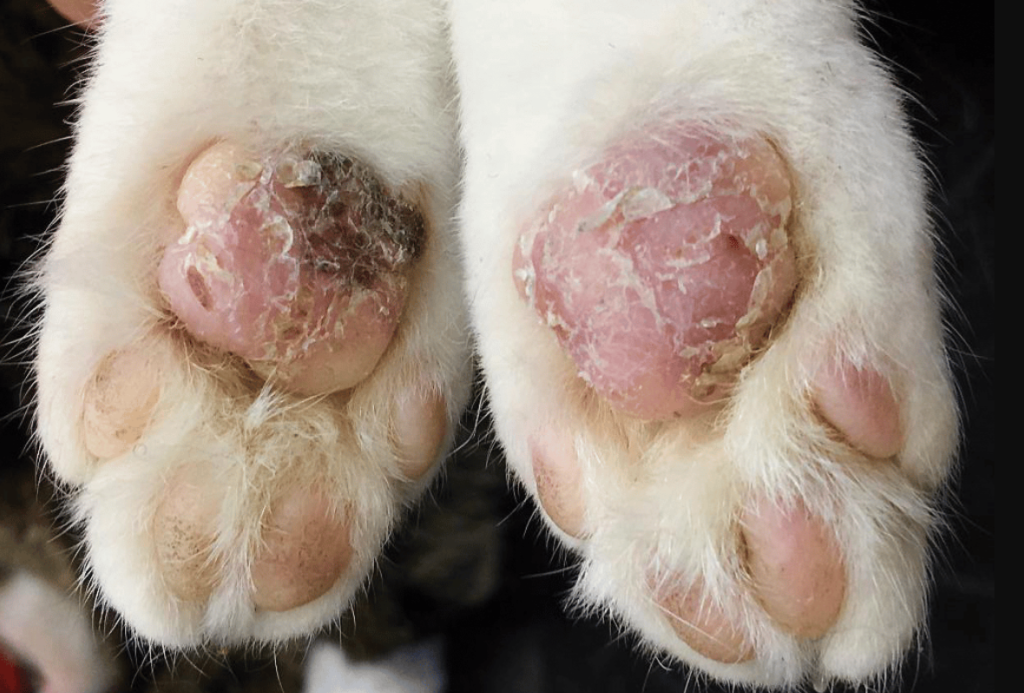
Allergic reactions affecting the paw pads can also lead to color and texture changes. Common causes include:
Food Allergies
Cats can develop food allergies to ingredients like chicken, beef, dairy, fish, or grains. This causes dry, scaly, inflamed skin and pads.
As the reaction resolves, the pads may appear darker temporarily before normalizing.
Contact Allergies
Allergens from surfaces, litter, grass, or chemicals can cause contact dermatitis. Pads become dry, cracked, and leathery.
Repeated exposure causes chronic inflammation, so pads may remain darkened, thickened and painful.
Flea Allergy Dermatitis (FAD)
Allergic reactions to flea bites lead to intense itching, redness, hair loss, and scabbing around the paws. Pad tissue can become damaged.
With flea treatment, the pads heal but may retain some thickening, hardness, or darkening.
Treatment for Paw Pad Allergies
Options for managing allergic skin reactions include:
- Identify and remove the allergen through food trials, litter changes, etc.
- Anti-itch medication and supplements help control symptoms.
- Immunotherapy can desensitize cats to specific allergens.
- Treat secondary infections if present.
- Keep paws clean and moisturized to aid healing.
Reason 5: Autoimmune Disorders Causing Pad Changes
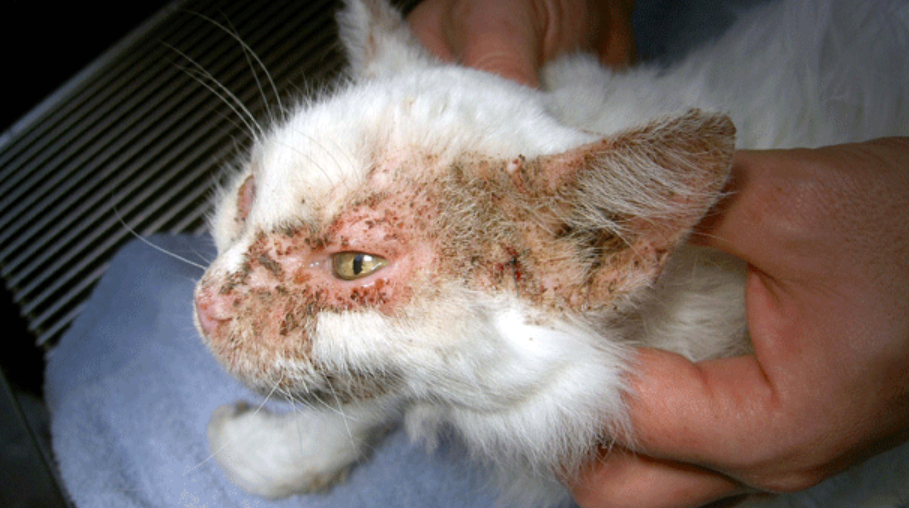
Some autoimmune disorders that can affect paw pad color and texture:
Pemphigus Foliaceus
This autoimmune disease causes severe crusting, pustules and scaling of the skin and pads. The pads become thickened and cracked.
With lifelong treatment, the footpads heal but remain permanently darkened and leathery.
Systemic Lupus Erythematosus
This disease causes ulcerations and tissue damage of the pads, leading to redness, swelling and pain.
Healed tissue may retain discoloration from scarring or blackening of the pads.
Treatment of Autoimmune Disorders
Managing autoimmune diseases requires:
- Immunosuppressive drugs to control the overactive immune system attacking tissues.
- Antibiotics to treat secondary skin infections.
- Pain medication for comfort.
- Good foot care by keeping pads clean and moisturized.
- Ongoing vet monitoring as these are chronic, lifelong conditions.
Reason 6: Tumors Causing Abnormal Paw Pads
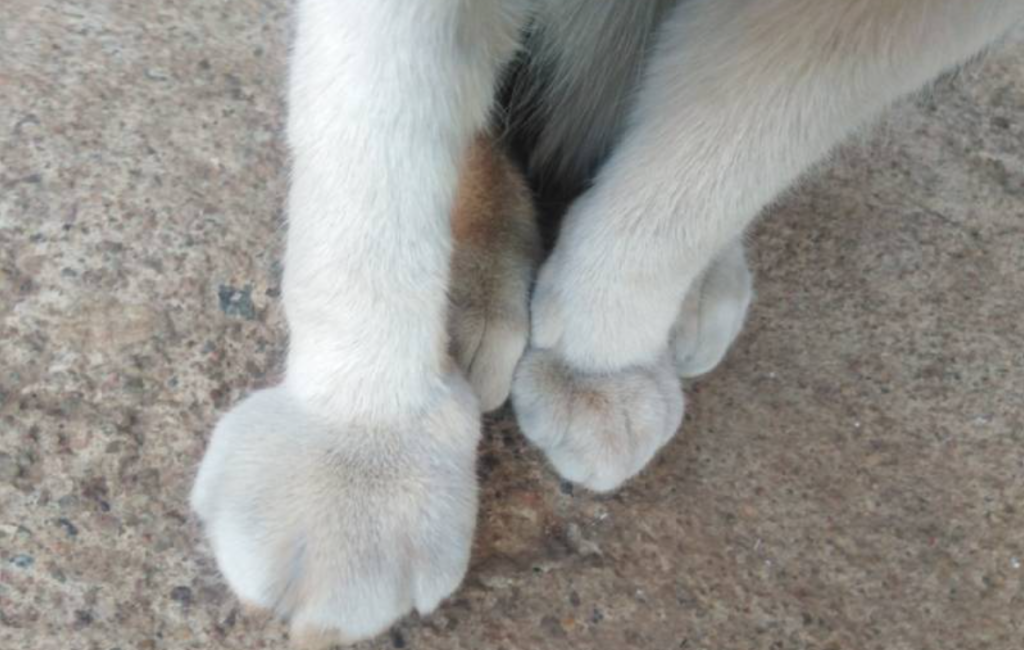
The development of tumors and cancers in the paw pad tissue can also lead to changes:
Squamous Cell Carcinoma
Tumors arising from the keratin-producing cells in the pad can become ulcerated and infected. This leads to red, inflamed, swollen and painful paws. Tumors may appear crusted or scaly.
Surgery is necessary to remove carcinomas. Healing may leave scar tissue lacking pigment, resulting in pale areas.
Mast Cell Tumors
These masses stemming from immune cells in the skin cause swollen, misshapen, ulcerated paw pads. They may ooze and become infected.
Surgical removal can restore normal pad structure, but pale scarring is likely.
Melanomas
Cancerous growths of the pigment-producing cells often appear dark brown to black on the pads. The texture becomes thickened and lumpy.
Removed melanomas often recur. Darkened tissue may persist after surgery.
Treating Paw Pad Tumors
For pad tumors, vets generally recommend:
- Surgical removal of malignant masses.
- Lab tests to check for metastasis.
- Preventing self-trauma from licking/chewing.
- Keeping the area clean and bandaged.
- Monitoring for recurrence and staging cancer severity.
Reason 7: Medical Conditions Causing Paw Discoloration
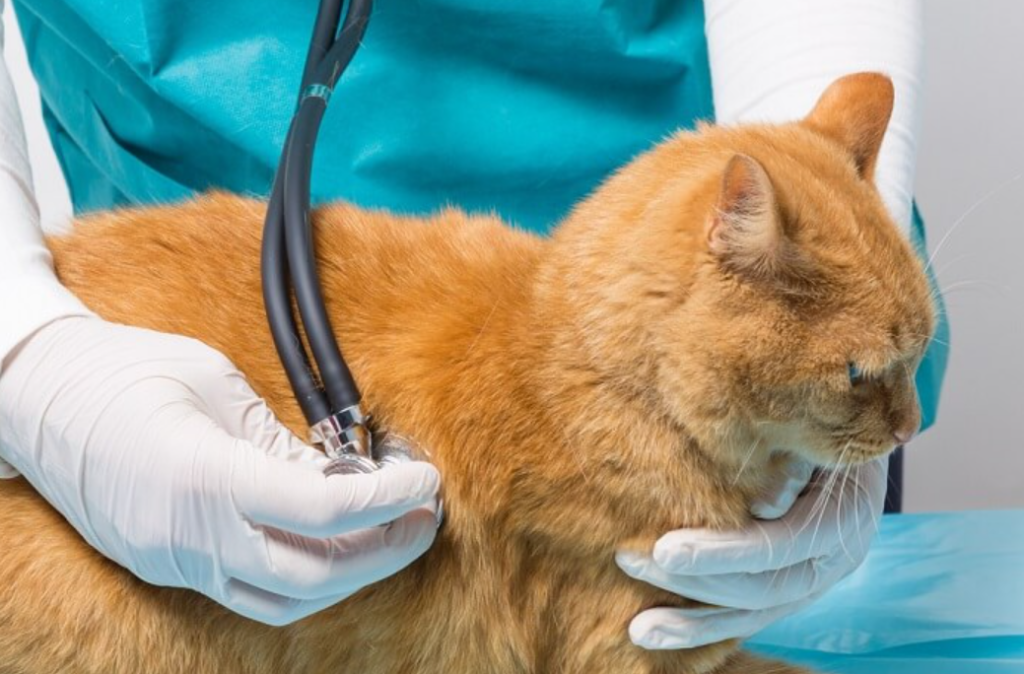
Some chronic illnesses and genetic conditions can also alter paw pad color:
Endocrine Disorders
Diseases like hyperadrenocorticism (Cushing’s disease) and hypothyroidism affect skin pigment. Pads may turn darker or lighter.
Proper treatment of the hormonal disorder often restores normal pad color.
Anemia
With reduced red blood cells, tissues receive less oxygen. Pads may appear paler or grayish.
As the underlying cause is treated, circulation improves and pads return to normal hues.
Melanocyte Deficiency
Rare genetic disorders like melanocyte deficiency inhibit full pigment production. Pads lack pink tones and remain pale grayish white.
There is no cure, but cats adapt well and lead normal lives. Extra paw protection is wise.
Jaundice
Liver disease leads to a buildup of bilirubin, causing yellowing of body tissues – including paw pads.
Pad color normalizes with treatment of the underlying liver condition.
Normal Pad Color Variations to Watch For
While many color changes warrant investigation, some normal variations can also occur:
- Mottled pads – Multi-colored spotting is common on the paws and belly of cats.
- Graying pads – Like hair, pad pigment may fade somewhat with age. Pads appear paler pink.
- Winter whitening – Seasonal fur color changes in cats can extend to the paws. Snowshoe patterning may diminish in warmer months.
- Nose-pad matching – Paw pads and nose leather often darken and lighten in unison due to blood flow changes.
- Hidden paws – When cats tuck paws under, the skin stays paler. Exposed pads resume normal color with blood flow.
- Beans! – Toe bean colors match the pad color genetically. Black cats have black beans, pink pads mean pink beans.
When to See the Vet
Schedule an exam if you notice any of the following:
- Limping, chewing, or licking at paws
- Visible wound with bleeding or discharge
- Significant swelling, redness, or pain
- Persistent texture/color change in pads
- Accompanying illness symptoms like appetite loss
- Lethargy and decreased activity level
Paw pad changes accompanied by other symptoms warrant veterinary investigation to determine the underlying cause. Prompt treatment provides the best chances for recovery and restoring normal pad appearance.
Caring for Kitty’s Paws
Along with monitoring pad health, be proactive with general paw care:
- Inspect paws regularly for any cuts, cracks, or changes.
- Clip nails carefully to avoid trauma.
- Choose soft, comfortable bedding.
- Prevent temperature extremes with shelter, bedding, booties.
- Use hypoallergenic, dust-free litter.
- Wipe off chemicals, salt, and deicers after outdoor walks.
- Apply moisturizing paw balms/waxes for protection.
- Disinfect litter boxes to prevent infections.
- Use pheromone plugins and toys to decrease stress over-grooming.
With attentive care and prompt veterinary attention when needed, kitties’ paw pads can stay healthy, happy, and looking positively perfect!
In Summary…
- Paw pad color is genetically determined, most often being pink or black. Chocolate brown and spotted pads also occur.
- Normal color variations happen with temperature, from paler pads in the cold to redder pads in heat. This is normal blood flow regulation.
- Injuries like cuts, burns, and frostbite can damage pads, leading to scarring and skin discoloration during healing.
- Bacterial, yeast and viral infections cause inflamed, irritated paws that may heal with some discoloration.
- Allergies produce itchy, dry, cracked paws. Darkened pads can persist with chronic exposure.
- Autoimmune diseases often permanently alter pad color and texture.
- Tumors need removal but may leave scar tissue. Malignancies warrant full cancer workup.
- Endocrine, blood, and genetic disorders can affect pad coloration until the underlying condition is treated.
- Check with your vet for any significant or persistent pad changes, especially when other symptoms are present.
- With attentive home care and prompt medical attention when required, kitty paws can stay happy inside and out!
I hope this article “Can Cat Paw Pads Change Color?” is feel informative to you

